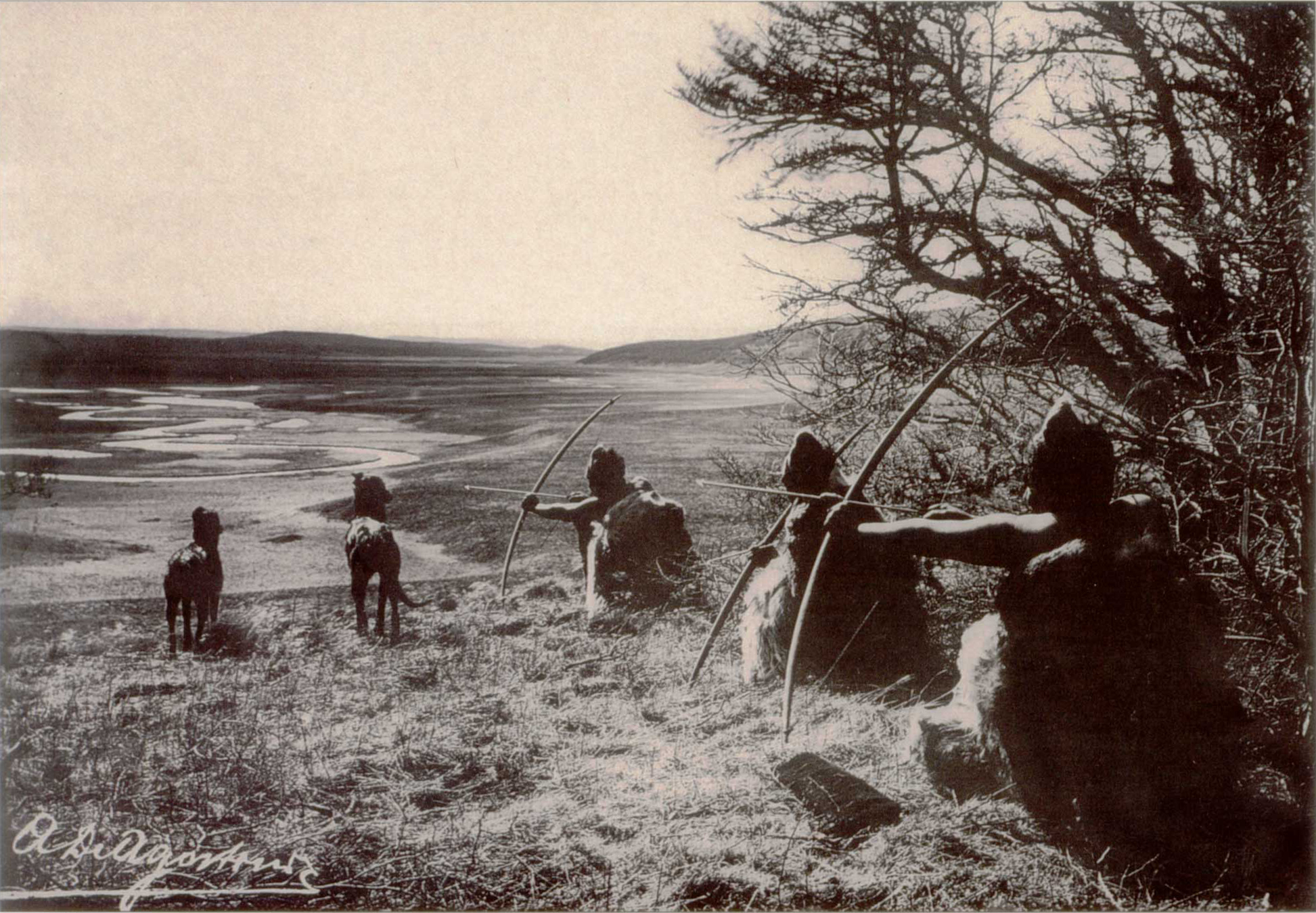|
Liolaemus
''Liolaemus'' is a genus of iguanian lizards, containing many species, all of which are endemic to South America. Description Members of the genus ''Liolaemus'' form a dominant part of the lizard fauna of the southern part of the continent of South America, and vary considerably in size ( snout–vent length) and weight (). Geographic range ''Liolaemus'' species are found in the Andes and adjacent lowlands, from Peru to Tierra del Fuego, at altitudes that can exceed . The genus has been recorded at above sea level on Chachani mountain, which is the highest recorded altitude for any reptile species. '' Liolaemus magellanicus'' and '' Liolaemus sarmientoi'' are the world's southernmost reptiles, living as far south as Isla Grande de Tierra del Fuego and the northern shores of the Strait of Magellan respectively. Diet Most species of ''Liolaemus'' are omnivorous, but a few purely insectivorous and herbivorous species are known. Species There are more than 225 descr ... [...More Info...] [...Related Items...] OR: [Wikipedia] [Google] [Baidu] |
Liolaemus Sarmientoi
''Liolaemus sarmientoi'' is a species of lizard in the family Liolaemidae. It is considered a medium-sized example of the family, with an average snout–vent length of 76 to 77 mm, with males usually larger than females. Etymology The lizard was first described by Chilean herpetologist Roberto Donoso-Barros in 1973. The species was initially categorized as a subspecies of ''Liolaemus archeforus'', another Patagonian species described by Donoso-Barros and Cei in 1971, but was elevated to a distinct species after further study by Cei and Scolaro in 1996. The specific name ''sarmientoi'' comes from the Spanish explorer Pedro Sarmiento de Gamboa, known for his early transit through the Strait of Magellan, which runs near the habitat of the species' population. Geographic range and habitat ''L. sarmientoi'' is considered one of the southernmost lizard species in the world, being endemic to the extreme southern regions of Chile and Argentina, known as Patagonia. The specie ... [...More Info...] [...Related Items...] OR: [Wikipedia] [Google] [Baidu] |
Liolaemus Magellanicus
''Liolaemus magellanicus'', also known commonly as Magellan's tree iguana, is a species of lizard in the family Liolaemidae. The species is native to southern South America. It is notable for being the southernmost lizard species in the world. Etymology The specific name, ''magellanicus'', refers to the Straits of Magellan. Geographic range ''Liolaemus magellanicus'' is found in Patagonia and Isla Grande de Tierra del Fuego in Chile and Argentina. Habitat The preferred natural habitat of ''Liolaemus magellanicus'' is areas of low vegetation such as grassland and shrubland, at elevations from sea level to . Description ''Liolaemus magellanicus'' may attain a snout-to-vent length (SVL) of , with a tail length about equal to the SVL. Boulenger GA (1885). ''Catalogue of the Lizards in the British Museum (Natural History). Second Edition. Volume II. Iguanidæ'' .... London: Trustees of the British Museum (Natural History). (Taylor and Francis, printers). xiii + 497 pp. + Plates I ... [...More Info...] [...Related Items...] OR: [Wikipedia] [Google] [Baidu] |
Liolaemus Nigromaculatus
''Liolaemus nigromaculatus'' is a species of tree iguana endemism, endemic to the Chilean matorral ecoregion within Chile. The species was first described in 1834, by Arend Friedrich August Wiegmann and was later redescribed in 2013 by Chilean biologists. References External links ''Liolaemus nigromaculatus'' at the Animal Diversity Web * Liolaemus, nigromaculatus Lizards of South America Endemic fauna of Chile Reptiles of Chile Fauna of the Chilean Matorral Reptiles described in 1834 Taxa named by Arend Friedrich August Wiegmann {{Liolaemidae-stub ... [...More Info...] [...Related Items...] OR: [Wikipedia] [Google] [Baidu] |
Liolaemid
Liolaemidae are a family of iguanian lizards. They were traditionally included in the family Iguanidae as subfamily Liolaeminae, which some more recent authors prefer to delimit in a more restricted way. This family is only found within South America with the widest range being in Argentina, Bolivia, Brazil, Chile, Peru, Uruguay, and Paraguay. A common name for this group is liolaemids. Liolaemidae are typically herbivores that have a diet high in fruit. Because of this special diet, Liolaemidae have a larger small intestine when compared to other similar omnivorous and insectivorous lizards. Liolaemidae also have evolved both herbivory and omnivory independently more times than any other lizard group The genera placed here are: * '' Ctenoblepharys'' – ''cabezona'' (one species) * ''Liolaemus'' – tree iguanas, snow swifts (over 280 species) * ''Phymaturus ''Phymaturus'' is a genus of iguanian lizards of the Family (biology), family Liolaemidae, a family which was traditi ... [...More Info...] [...Related Items...] OR: [Wikipedia] [Google] [Baidu] |
Chachani
Chachani is a volcanic group in southern Peru, northwest of the city of Arequipa. Part of the Central Volcanic Zone of the Andes, it is above sea level. It consists of several lava domes and individual volcanoes such as Nocarane, along with lava shields such as the Airport Domes. Underneath Chachani lies a caldera. During the Pliocene and early Pleistocene, the volcanic group produced large ignimbrites such as the La Joya, Arequipa Airport, and Yura Tuff ignimbrites; afterwards, the volcanic group proper grew in the caldera until about 56,500 years ago. There have not been any eruptions during historical time, but the volcano is considered to be only dormant and due to its closeness to the city of Arequipa is considered high-risk. Name The name means "brave" in Aymara or "mountain of man"/"mountain of male"; the alternative spellings "Cacheni" and "Charchani" are also known. Geography and geomorphology The volcano lies in the Andes of southern Peru, northwest of Are ... [...More Info...] [...Related Items...] OR: [Wikipedia] [Google] [Baidu] |
Tierra Del Fuego
Tierra del Fuego (, ; Spanish for "Land of Fire", rarely also Fireland in English) is an archipelago off the southernmost tip of the South America, South American mainland, across the Strait of Magellan. The archipelago consists of the main island, Isla Grande de Tierra del Fuego, with an area of , along with numerous smaller islands, including Cape Horn and Diego Ramírez Islands. The western part of the Tierra del Fuego archipelago, about two-thirds including its many islands, is part of Chile, and the eastern part is part of Argentina. The southernmost extent of the archipelago, Cape Horn, lies just north of latitude 56th parallel south, 56°S. The earliest-known human settlement in Tierra del Fuego dates to approximately 8,000 BC. Europeans first explored the islands during Ferdinand Magellan's expedition of 1520. ''Tierra del Fuego'' ("Land of Fire") and similar names stem from sightings of the many fires that the inhabitants built along the coastline and possibly even in ... [...More Info...] [...Related Items...] OR: [Wikipedia] [Google] [Baidu] |
Arend Friedrich August Wiegmann
Arend Friedrich August Wiegmann (2 June 1802 – 15 January 1841) was a German zoologist and herpetologist born in Braunschweig. He studied medicine and philology at the University of Leipzig, and afterwards was an assistant to Martin Lichtenstein (1780–1857) in Berlin. In 1828 he became a professor at University of Cologne, and two years later was an extraordinary professor at the Friedrich Wilhelm University in Berlin. Wiegmann specialized in the study of herpetology and mammalogy. In 1835, he founded, together with other scholars, the zoological periodical '' Archiv für Naturgeschichte'', also known as "Wiegmann's Archive". With Johann Friedrich Ruthe (1788–1859) he wrote an important textbook of zoology called ''Handbuch der Zoologie'', and in 1834 Wiegmann published ''Herpetologia Mexicana'', a monograph on the reptiles of Mexico. In 1841 he died of tuberculosis at the age of 38 in Berlin. His father Arend Friedrich Wiegmann (1771–1853) was a German research ... [...More Info...] [...Related Items...] OR: [Wikipedia] [Google] [Baidu] |
Iguania
Iguania is an infraorder of squamate reptiles that includes iguanas, chameleons, agamids, and New World lizards like anoles and phrynosomatids. Using morphological features as a guide to evolutionary relationships, the Iguania are believed to form the sister group to the remainder of the Squamata, which comprise nearly 11,000 named species, roughly 2000 of which are iguanians. However, molecular information has placed Iguania well within the Squamata as sister taxa to the Anguimorpha and closely related to snakes. The order has been under debate and revisions after being classified by Charles Lewis Camp in 1923 due to difficulties finding adequate synapomorphic morphological characteristics. Most iguanians are arboreal but there are several terrestrial groups. They usually have primitive fleshy, non-prehensile tongues, although the tongue is highly modified in chameleons. Today they are scattered occurring in Madagascar, the Fiji and Friendly Islands and Western Hemispher ... [...More Info...] [...Related Items...] OR: [Wikipedia] [Google] [Baidu] |
Herbivorous
A herbivore is an animal anatomically and physiologically evolved to feed on plants, especially upon vascular tissues such as foliage, fruits or seeds, as the main component of its diet. These more broadly also encompass animals that eat non-vascular autotrophs such as mosses, algae and lichens, but do not include those feeding on decomposed plant matters (i.e. detritivores) or macrofungi (i.e. fungivores). As a result of their plant-based diet, herbivorous animals typically have mouth structures ( jaws or mouthparts) well adapted to mechanically break down plant materials, and their digestive systems have special enzymes (e.g. amylase and cellulase) to digest polysaccharides. Grazing herbivores such as horses and cattles have wide flat- crowned teeth that are better adapted for grinding grass, tree bark and other tougher lignin-containing materials, and many of them evolved rumination or cecotropic behaviors to better extract nutrients from plants. A large per ... [...More Info...] [...Related Items...] OR: [Wikipedia] [Google] [Baidu] |
Molecular Phylogenetics And Evolution
''Molecular Phylogenetics and Evolution'' is a peer-reviewed scientific journal of evolutionary biology and phylogenetics. The journal is edited by E.A. Zimmer. Indexing The journal is indexed in: * EMBiology *Journal Citation Reports *Scopus Scopus is a scientific abstract and citation database, launched by the academic publisher Elsevier as a competitor to older Web of Science in 2004. The ensuing competition between the two databases has been characterized as "intense" and is c ... * Web of Science External links * Elsevier academic journals Evolutionary biology journals Phylogenetics Academic journals established in 1992 Monthly journals {{biology-journal-stub ... [...More Info...] [...Related Items...] OR: [Wikipedia] [Google] [Baidu] |



